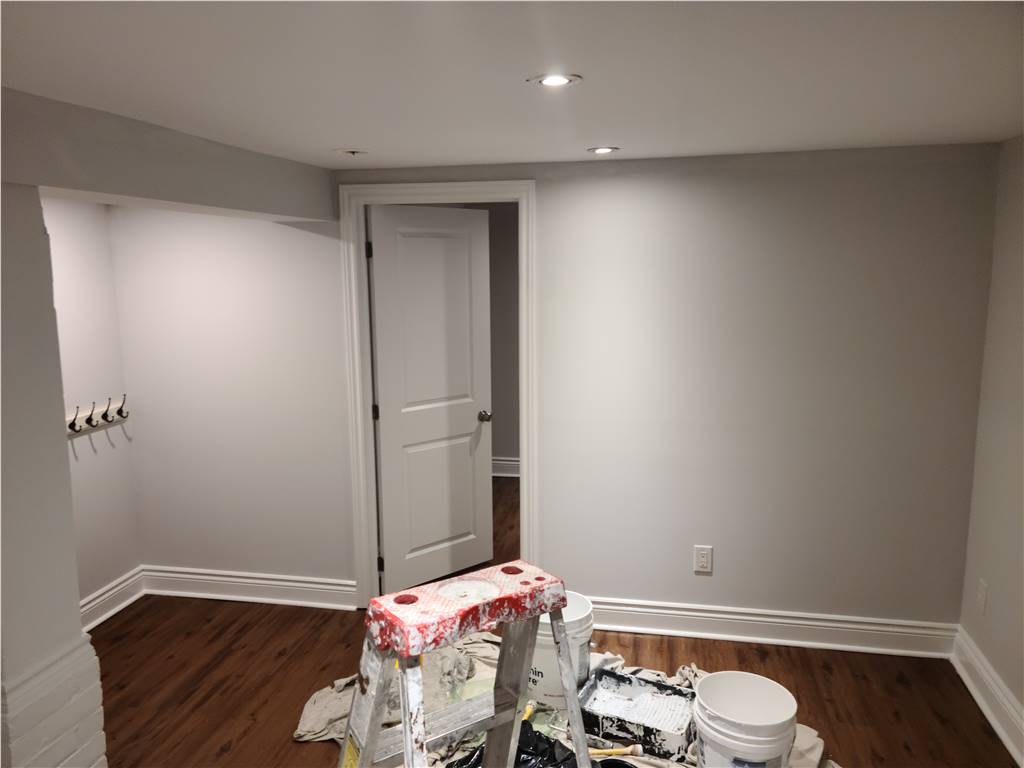
How To Fix And Prep Wall Surface Before Painting
You should take care to take a little extra time and prepare your walls before painting, because you will get a better result. Follow our steps below to learn how to prepare freshly plastered walls, a pre-painted wall with a few cracks and holes, and a previously wallpapered wall. Regardless of the material of your walls, they should be dry before painting, free of oil and dust, holes and cracks, flaky plaster, peeled paint and pieces of wallpaper.
If possible, move the furniture in the room you are going to paint to a separate place, if not, place your furniture in the middle of the room and cover them with a protective layer such as nylon.
How to Prepare a New Plastered Wall for Paint?
This is probably the easiest surface to paint on. All you have to do is apply primer and paint with a roller to create the best surface. If you don't prime the surface with a sealer, the plaster will absorb any paint like a sponge, so you'll be wasting too much paint and need to make more coats of paint than you need. Allow all new plaster to dry completely before decorating.
How to Prepare for Old Surface Wall Paint?
Previously painted walls are fairly easy to prepare for new paint, but a few things need to be done first to help with this professional finish.
FILL HOLES AND CRACKS:
Step 1: Clean the gaps with soapy water before filling as any dust will prevent the sealant from sticking to the wall.
Step 2: Take your flexible caulking knife and push the caulk into the cavity until it is smooth with the wall.
Step 3: Let the filler dry, then smooth it out with fine sandpaper.
Sand the Walls: Get a new piece of fine sandpaper and lightly sand all the walls and any peeling paint. This gives the wall a texture that will help the paint bond to the surface.
Clean the Walls: Remove traces of grease, crayon or absorbent with a sugar soap solution. It comes ready mixed or as a solution to mix with water. Wear gloves and apply sugar soap to the walls. After all the walls have been cleaned, give the surface a final clean with warm water to remove any traces of soap. Let the walls dry thoroughly.
Preparing Pre-Wallpapered Walls for Painting:
You can paint over the wallpaper, but it may not be the best finishing option for you, so removing the wallpaper before you start is the best solution. Wall-mounted wallpaper can be peeled off without soaking time or tools. However, he will need to follow the steps below to remove the wallpaper that is covered by gluing the back of the paper.
Step 1: Wet the wallpaper with a sponge and hot water to make it easier to remove. Soak a few feet at a time and leave for five minutes to soften. Be careful when working around electrical switches and sockets.
Step 2: Slide a wide stripping knife into one of the cuts and remove the paper. Repeat this process until all the paper is removed.
Step 3: If you have trouble removing the wallpaper, try a wallpaper stripping solution that breaks the wallpaper paste. Wet the paper with the solution, let it sit for a while and scrape it off with a knife. You can also try a steam skimmer, fill the tank with water.
Step 4: After most of the paper is covered, there may be small pieces of paper stuck to the wall. If it can't be removed with your scraping knife, try using a piece of sandpaper to get rid of the pieces.
Step 5: Use a new piece of sandpaper and lightly sand the walls.
Step 6: Remove traces of grease, crayon or absorbent with a sugar soap solution. It comes ready mixed or as a solution to mix with water. Wear gloves and apply sugar soap to the walls. After all the walls have been cleaned, give the surface a final clean with warm water to remove any traces of soap. Let the walls dry thoroughly.



